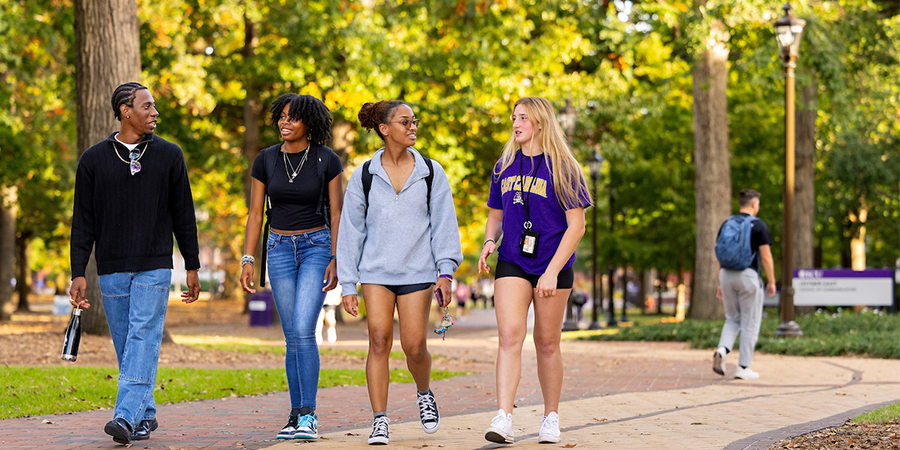
Public universities enroll 18,719 transfer students; record number underscores efforts to simplify transfer process
This fall, the University of North Carolina System’s 16 universities welcomed 18,719 transfer students, an 8.2% increase since fall 2024, and the highest number on record. Of those, 10,840 students transferred from community colleges to UNC System institutions.
The historic number underscores System efforts to make transfer pathways simpler, faster and more transparent for students, and marks National Transfer Student Week, Oct. 20-24, an annual celebration of transfer students and the professionals who support them on their journey.
“Transfer students bring a wealth of talent and experience to our universities, improving the quality of education for everyone,” said UNC System President Peter Hans. “We’ve worked hard over the past few years to simplify our admissions, scholarship and credit policies so that North Carolina’s public universities are extending a warm invitation to students of all backgrounds. Our growing population of transfer students shows that those efforts are making a difference for the people we serve.”
“Our systems are working more closely than ever to ensure community college students have a clear and seamless path to continue their education within the UNC System,” said Dr. Jeff Cox, president of the North Carolina Community College System. “By removing barriers and improving access to information, we’re helping students make confident, informed choices about their futures.”
Transfer process reform is front and center in the UNC System’s efforts to cut red tape and make college more accessible. Many of those changes have been made in partnership with the North Carolina Community College System.
This year, the UNC Board of Governors approved major revisions to a comprehensive agreement around requirements for students who transfer from the state’s community colleges. Those changes, which were approved last week by the State Board of Community Colleges, clarify protections for students and make transfer rules easier to understand.
In 2022, the System began using a shared catalog of general education classes, making sure those course numbers match up across all 16 universities, and allowing transfer students to see how their coursework will count toward a four-year degree at other UNC System institutions.
In February, the UNC System enacted a regulation to shorten a transfer student’s wait period for transcript review. After a student is accepted for admission by a university, that institution reviews academic transcripts to see how many credits count toward a desired degree. Historically, the process has been time consuming. But the UNC System’s new rule ensures that any student who submits three or fewer transcripts to a System institution can expect a credit transfer evaluation within 15 business days.
The System also simplified appeals for students who believe they lost some of their previously earned credits during the transfer process. The Transfer Credit and Appeals Portal, which launched this year, gives students a clear, online path to appeal transfer-credit decisions. Those appeals are reviewed by transfer advisory committees and supported by UNC System staff.
More than 1,500 transfer guides are also available to NC Community College students, with directions on courses students must take to transfer and earn a four-year degree from their chosen UNC institution.
Going forward, the UNC System will streamline and expand its transfer agreements, particularly in high demand fields and applied science programs. It will also build a statewide transfer advisory structure to promote collaboration and accountability between the System, state community colleges and private colleges and universities.
Additionally, the System plans to better align advising, faculty engagement, policy updates and data systems to ensure students have clear, consistent information as they plan their degrees. Other initiatives will expand support for adult learners, military and veteran students and dual-enrolled students, helping more North Carolinians complete their education and enter the state’s growing workforce.